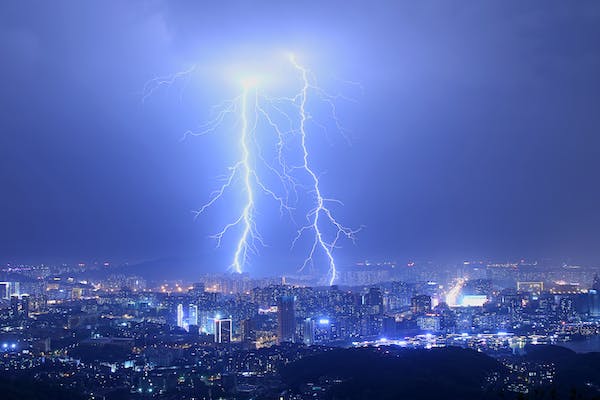The Electric Dance of Lightning: Unraveling Nature's Spectacle
The Electric Dance of Lightning: Unraveling Nature's Spectacle
Few natural phenomena command the awe and wonder that lightning does. The brilliant flashes of light, the deafening claps of thunder, and the sheer power of nature on display during a thunderstorm are a testament to the forces at play in our atmosphere. In this blog, we will explore why lightning happens and why it strikes down to Earth, shedding light on the electrifying science behind this natural spectacle.
The Birth of Lightning
Lightning is a natural discharge of electricity that occurs within thunderstorms. It is a complex process that begin
s with the buildup of electric charge within the storm clouds. This charge separation is the key to understanding why lightning happens.
1. Charge Separation: Thunderclouds are full of water droplets and ice crystals. As these particles collide and move within the cloud, they interact with each other, causing electrons to be stripped away from some particles and transferred to others. This separation of electric charge creates areas of positive and negative charge within the cloud.
2. Formation of Leaders and Streamers: Within the cloud, regions of negative charge concentrate at the bottom, while positive charge congregates at the top. When the difference in charge becomes significant, it creates pathways called "leaders" that extend downward from the cloud.
3. The Lightning Strike: Once a leader approaches the ground, it creates an electric field that reaches upward, resulting in the formation of "streamers" from objects on the ground. When a streamer and a leader connect, a conductive path is established, and a powerful electrical discharge, known as lightning, occurs.
Why Lightning Strikes Down
Now that we understand how lightning is born, let's delve into why it strikes down towards the Earth.
1. Path of Least Resistance: Lightning seeks the path of least resistance to reach the ground. Air is normally an insulator, but when the electric field is strong enough, it can ionize the air, making it conductive. This ionized air creates a channel for the lightning to follow.
2. Attraction to Grounded Objects: Lightning is attracted to objects on the Earth's surface that are good conductors of electricity, such as tall trees, buildings, and even people. These objects offer a more efficient pathway for the electrical discharge to reach the ground.
3. Protection of the Earth: Lightning serves a crucial role in maintaining the Earth's electrical balance. When lightning strikes the ground, it helps to equalize the electric charge between the Earth and the atmosphere, preventing a buildup of excessive charge that could lead to more lightning strikes.
Conclusion
Lightning is a breathtaking and powerful natural phenomenon driven by the intricate dance of electric charges within thunderstorms. Understanding why lightning happens and why it strikes down to Earth is a fascinating glimpse into the world of atmospheric physics. While it may be a spectacular display of nature's power, it's also a reminder of the delicate electrical equilibrium that exists between the Earth and the sky. The next time you witness a lightning storm, you can appreciate the science behind the electric dance that lights up the night sky.








Comments
Post a Comment